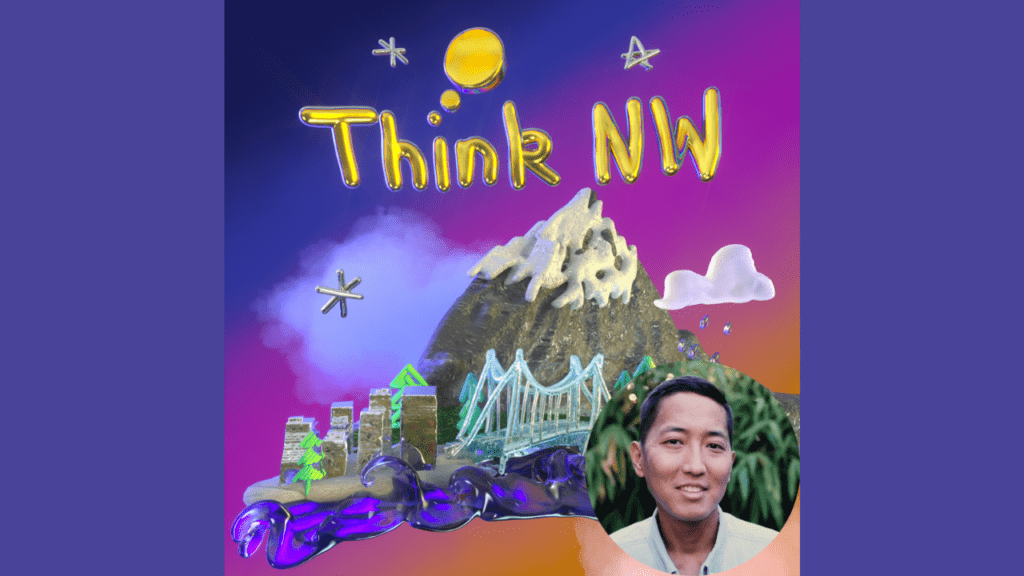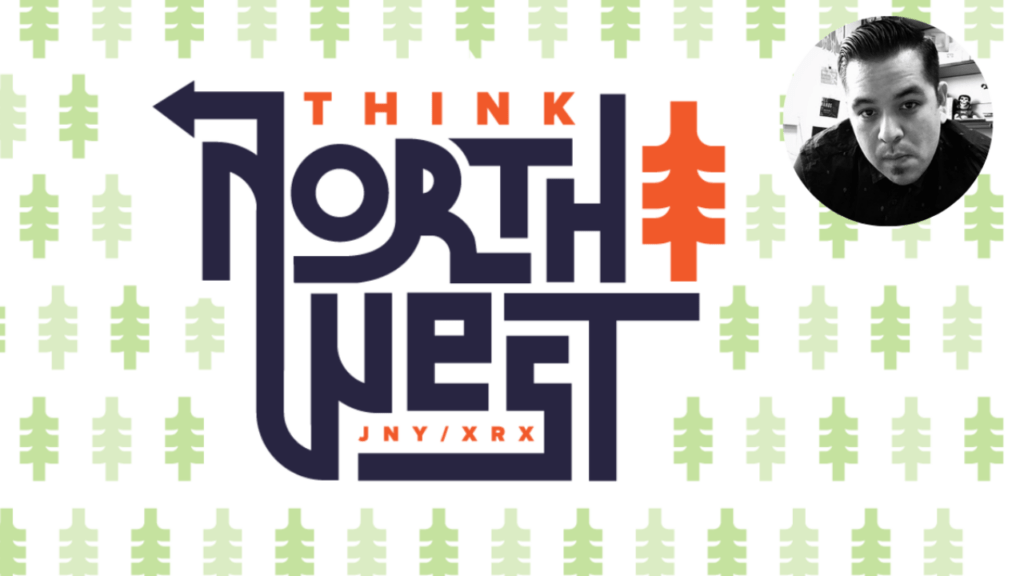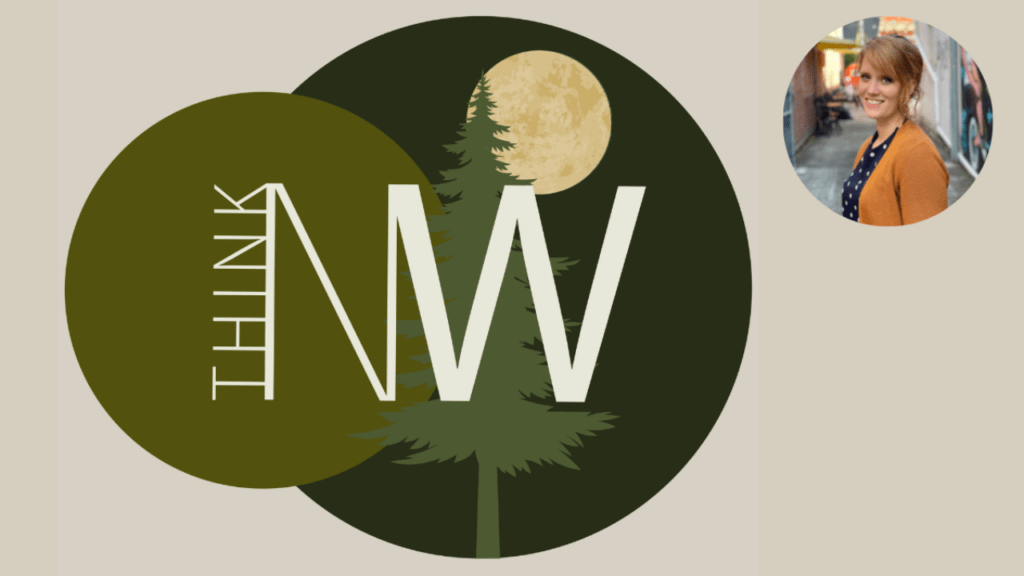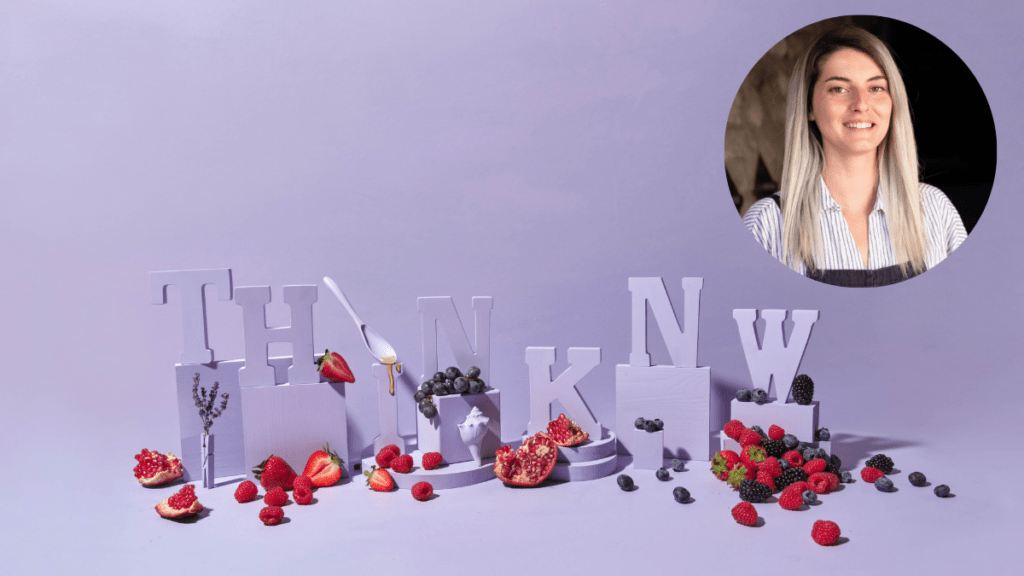September Logo Remix: J. Stephen Lee

Every month, we invite a new artist to take the ThinkNW logo and make it their own. For our September Logo Remix, we asked J. Stephen Lee, a Portland State University faculty advisor at Comma, to give us his take on the ThinkNW logo.
How did you initially want to approach your interpretation of the ThinkNW logo? What were your thoughts and inspiration?
One thing that I’ve enjoyed about living in Portland is how close the urban and natural environments are to each other. Mountains act as a backdrop, and the Willamette River cuts through Portland, offering a view of the water. These were all things I thought about while working.
How did the direction in designing the ThinkNW logo evolve/change over time?
I knew I wanted to do something in 3D for this project. Lately, I’ve been experimenting with sculpting 3D forms using a virtual reality (VR) headset and Adobe Medium. This process lets me work quickly and expressively. I think of it as doodling in three dimensions. After creating all the 3D forms, I imported the assets into Cinema 4D, a 3D program, and added textures and lighting. I played around with these elements along with the composition. I also redrew the ThinkNW logo a few times before settling on a version that references the original logo.
What are some of the specific elements in the ThinkNW logo design that you feel are unique/cool/fun (i.e., palette, illustration, overall style)?
I had a lot of fun working in VR. I enjoy the imperfections and immediacy of the drawing process. I think it keeps things kind of loose and wonky. I know there are things I could clean up from a technical perspective but I think the imperfections and distortions add character to the overall image.
When did you know that art was something that you wanted to pursue?
I guess I’ve been interested in art from an early age and through high school. I was undecided when I went to college but I ended up majoring in art before switching to graphic design during graduate school.
What are the biggest inspirations in your art (i.e., people, places, things)?
I’m interested in the creative possibilities offered by new technologies such as VR. The Internet is a great place to get inspiration and learn how to do things but I also enjoy seeing art in person and traveling. Those are things I haven’t been able to do as much in the past year or so. Lately, I’ve also come to realize that one of the things that give me the most creative inspiration is just having time and space to create. I think it’s important to carve out some time for creative pursuits.
Do you think that you have a style? If so, how would you describe it? If not, why is that?
I have a few styles and ways of working. I think this stems from being curious about a lot of things and having an experimental mindset. As a designer, I always try to pick an execution that makes sense for the project. On a personal level, I enjoy working in 3D and VR. I’m also interested in generative and programmatic art. There definitely is a focus on technology in my work, but I always try to connect the tools to a larger artistic vision.
What is most important to you when expressing your art?
For me, art is a personal thing. Making art is a creative practice that helps me interpret things around me and express my internal state. I try to have fun and push myself to grow as an artist.
Where do you feel your art is going next?
There are a lot of things I’m interested in right now. I think augmented reality (AR) and virtual reality are really exciting. I’d love to keep developing my visual style in 3D but also start building more interactive experiences in AR and VR. I’m always open to freelancing or collaborating since I enjoy the exchange of ideas and processes.
I want to thank ThinkNW for this opportunity and its support of the BIPOC creative community. At Portland State University, I’m one of the faculty advisors for Comma, a group that supports BIPOC students in the graphic design program. I think it’s important to recognize the barriers that people of color face in the creative fields. One of the barriers is a lack of access to technology. Another organization that I’m part of is CETI—A Creative and Emergent Technology Institute. CETI has been doing some good work in making technology accessible to the local community.
Learn more about J. Stephen Lee at his website, LinkedIn, and Instagram.




